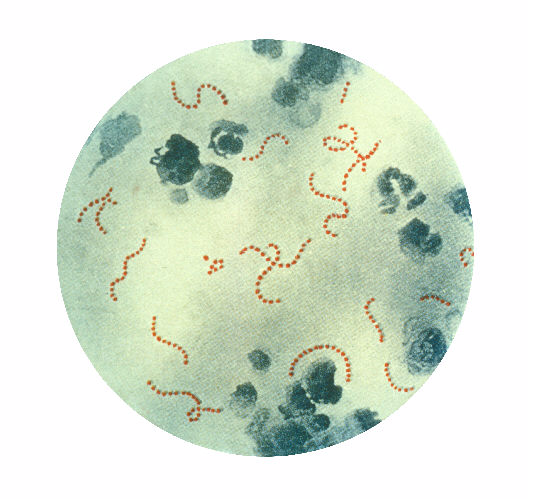
This web page was produced as an assignment for an undergraduate course at Davidson College.
Streptococcus pyogenes
Streptococcus pyogenes, also referred to as group A streptococcus or GAS, is a Gram-positive bacterial species that can be found in 5-15% of the population at any given time (Todar 2002). Streptococci generally colonize the mucosal membranes, such as those in the oral and vaginal cavities, but can enter the bloodstream and infect deep tissues, causing serious illness (LaPenta et al. 1994). S. pyogenes can cause infections ranging from minor, such as strep throat and cellulitis, to major, such as necrotizing fasciitis (NF; commonly known as flesh-eating disease) and streptococcal toxic shock syndrome (STSS) (Center 2005).
Treatment and Future Directions

Figure 1. Streptoccus pyogenes isolated from a pus specimen. Chains of S. pyogenes can be seen (orange) in a pus sample visualized at 900x with Pappenheim's stain. From the Center for Disease Control and Prevention. <http://phil.cdc.gov/PHIL_Images/09132002/00004/PHIL_2110_lores.jpg>
Davidson College Biology Home Page
Send any comments or concerns to beenglish@davidson.edu
© Copyright 2007 Department of Biology, Davidson College, Davidson, NC 28035